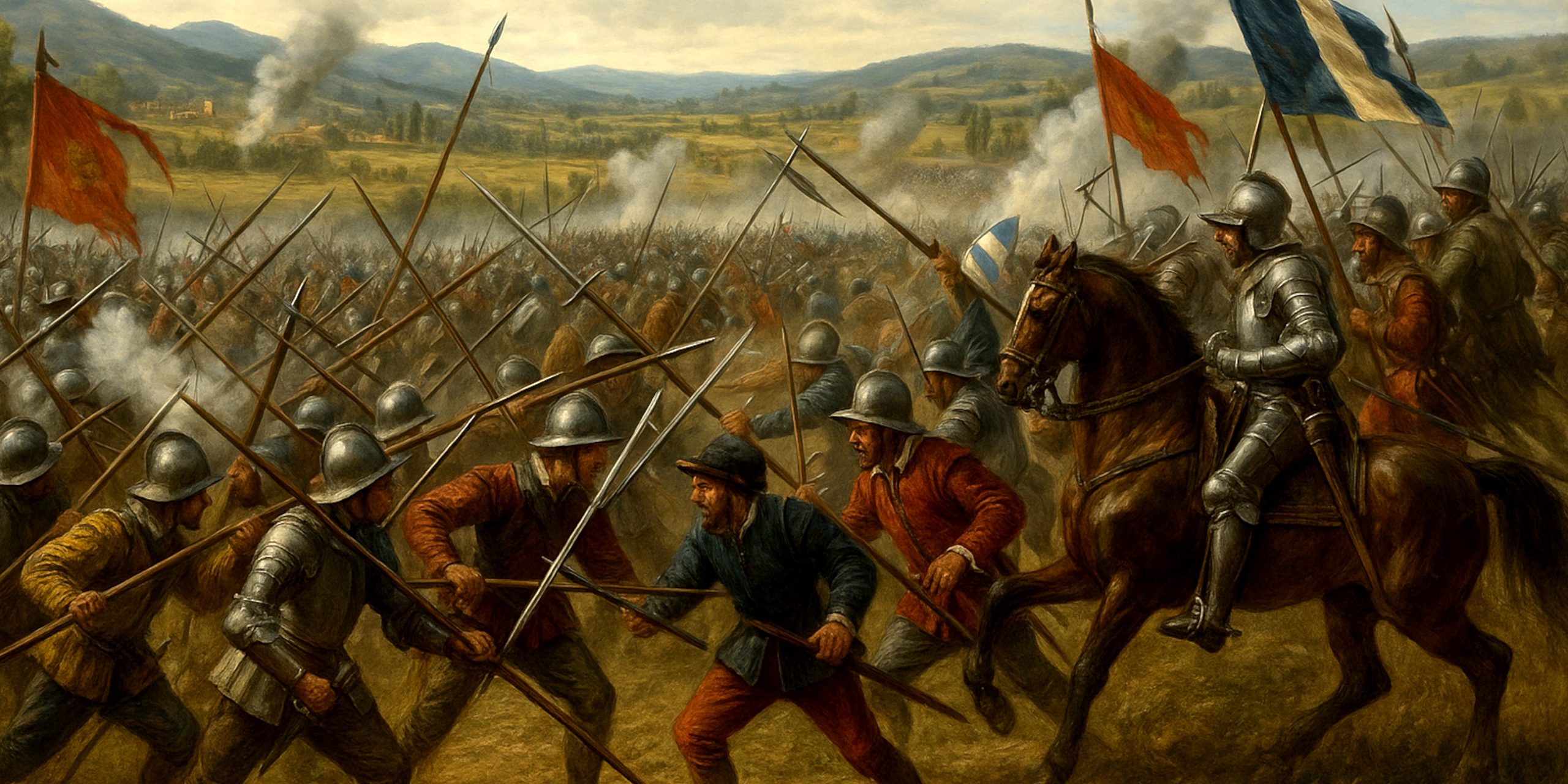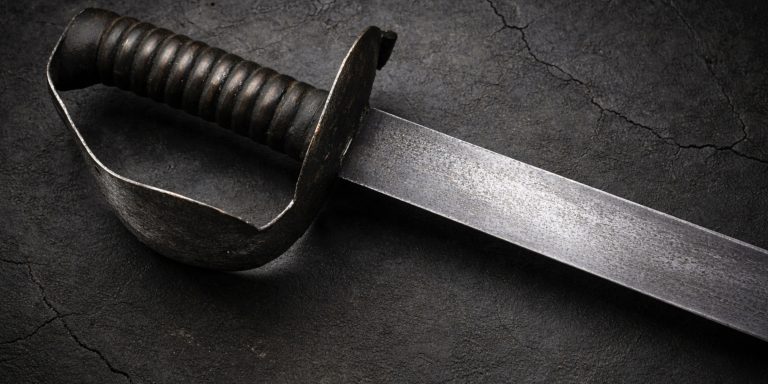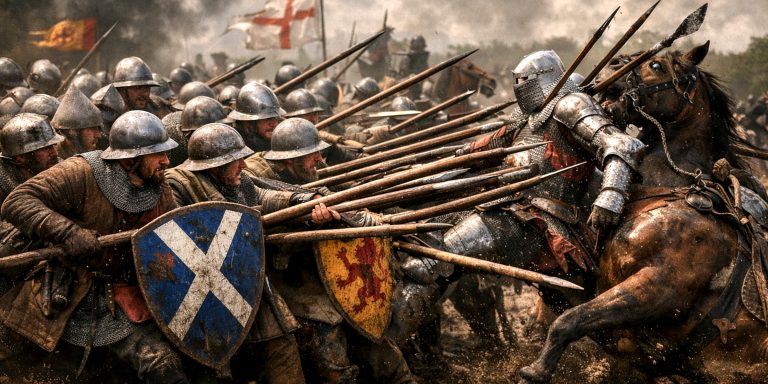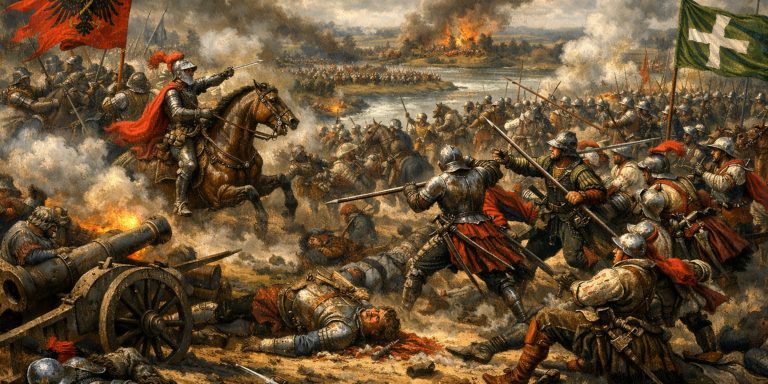
Few battles marked the end of a republic so emphatically as the Battle of Marciano, also known as the Battle of Scannagallo. Fought on 2 August 1554 near the small Tuscan hamlet of Marciano della Chiana, it saw the armies of Cosimo I de’ Medici, supported by imperial Spanish forces, crush the last Florentine republican army loyal to Siena and the French crown. It was, in effect, the final nail in the coffin of Florence’s brief flirtation with liberty.
Background
By the mid-sixteenth century, Italy was less a collection of independent states and more a chessboard upon which France and Spain moved their pieces. Siena, long a rival of Florence, had fallen under French protection, while Florence under Cosimo I had hitched its fortunes to the Holy Roman Empire and Spain. The resulting clash was inevitable, though one doubts anyone in Siena expected quite such a thorough unravelling of their hopes.
Cosimo’s forces, under the capable command of Gian Giacomo Medici (no direct relation to Cosimo but a veteran soldier of fortune), sought to bring the rebellion to heel once and for all.
Forces
Location: Near Marciano della Chiana, Tuscany
Date: 2 August 1554
Result: Decisive Florentine-Imperial victory
| Belligerent | Commanders | Estimated Strength | Allies |
|---|---|---|---|
| Duchy of Florence (Medici) and Imperial Spain | Gian Giacomo Medici (known as “Il Medeghino”) | c. 13,000 men | Spanish tercios, German Landsknechts |
| Republic of Siena and French forces | Piero Strozzi | c. 14,000 men | French infantry, Italian exiles, and cavalry |
The numbers were close enough to make the contest seem fair on paper, though the discipline and cohesion of the Medici-Imperial army made the difference once the lines met.
Arms and Armour
The mid-sixteenth century was a curious halfway house between medieval and modern warfare. Pike squares and arquebusiers fought side by side, while cavalry remained an essential shock arm.
Florentine-Imperial Army
- Infantry:
- Spanish tercios equipped with pikes, matchlock arquebuses, and steel morions.
- German Landsknechts wielding long pikes and Katzbalger short swords.
- Cavalry:
- Armoured cuirassiers bearing longswords and wheel-lock pistols.
- Swords:
- Katzbalger (short and robust, favoured by Landsknechts).
- Side-swords and early rapiers for officers.
Sienese-French Army
- Infantry:
- French and Italian mercenaries armed with arquebuses and halberds.
- Light infantry skirmishers using crossbows in wooded terrain.
- Cavalry:
- French gendarmes in heavy plate, still brandishing longswords and estocs.
- Swords:
One contemporary Florentine observer remarked, not without satisfaction, that the Sienese “had fine blades but poor stomachs for the fight.”
Battle Events
The morning of 2 August dawned dry and hot, the kind of Tuscan heat that makes steel burn to the touch. Piero Strozzi, leading the Sienese and French, took the high ground and formed a defensive position, hoping to draw the enemy in. Gian Giacomo Medici, however, manoeuvred with characteristic precision, feigning a flank attack before committing his main force.
The battle unfolded as a grinding contest between pike and shot formations. Spanish arquebusiers delivered withering volleys, followed by a disciplined advance of pikemen. Strozzi’s cavalry attempted to counterattack but were repulsed by the steady Florentine-Imperial ranks.
By midday, the Sienese line began to crumble. Panic spread as Medici’s cavalry struck the rear, and the retreat turned into a rout. Strozzi himself was wounded and barely escaped. Thousands were captured, and Siena’s hopes for independence died with them.
Archaeology
Archaeological surveys near Marciano della Chiana have revealed musket balls, pike heads, and fragments of plate armour scattered across the fields. A rusted sword hilt recovered in 2003 was identified as a Katzbalger, likely belonging to a Landsknecht mercenary. The soil still turns up lead shot after heavy rain, grim reminders of the day Tuscany was hammered into submission.
Battle Timeline
| Time | Event |
|---|---|
| Early morning | Armies deploy near Marciano; Sienese occupy higher ground. |
| Mid-morning | Florentine-Imperial forces advance; exchange of arquebus fire. |
| Late morning | Medici’s pike squares engage the Sienese line head-on. |
| Noon | Imperial cavalry outflank and shatter the Sienese left wing. |
| Early afternoon | Strozzi wounded; his army breaks and retreats. |
| Evening | Florentine-Imperial victory confirmed; survivors captured or scattered. |
Contemporary Accounts
Benedetto Varchi, a Florentine historian writing soon after the battle, noted:
“The fortune of Florence was made in a single day, and Siena’s liberty lost in an hour.”
Another chronicler, less poetic but more cutting, wrote:
“Strozzi fought bravely, but with too much French counsel and too little Italian sense.”
Legacy
The Battle of Marciano effectively ended Siena’s independence. The city surrendered in April 1555 after a long and miserable siege, and Tuscany became firmly consolidated under Medici control. Cosimo I later styled himself Grand Duke of Tuscany, a title confirmed by Pope Pius V in 1569.
From a military historian’s perspective, Marciano was a model of early modern combined arms warfare, with the balance tipping toward disciplined infantry and organised firearms. From a Florentine perspective, it was simply the day liberty gave way to order, as is often the case in Italian history.



